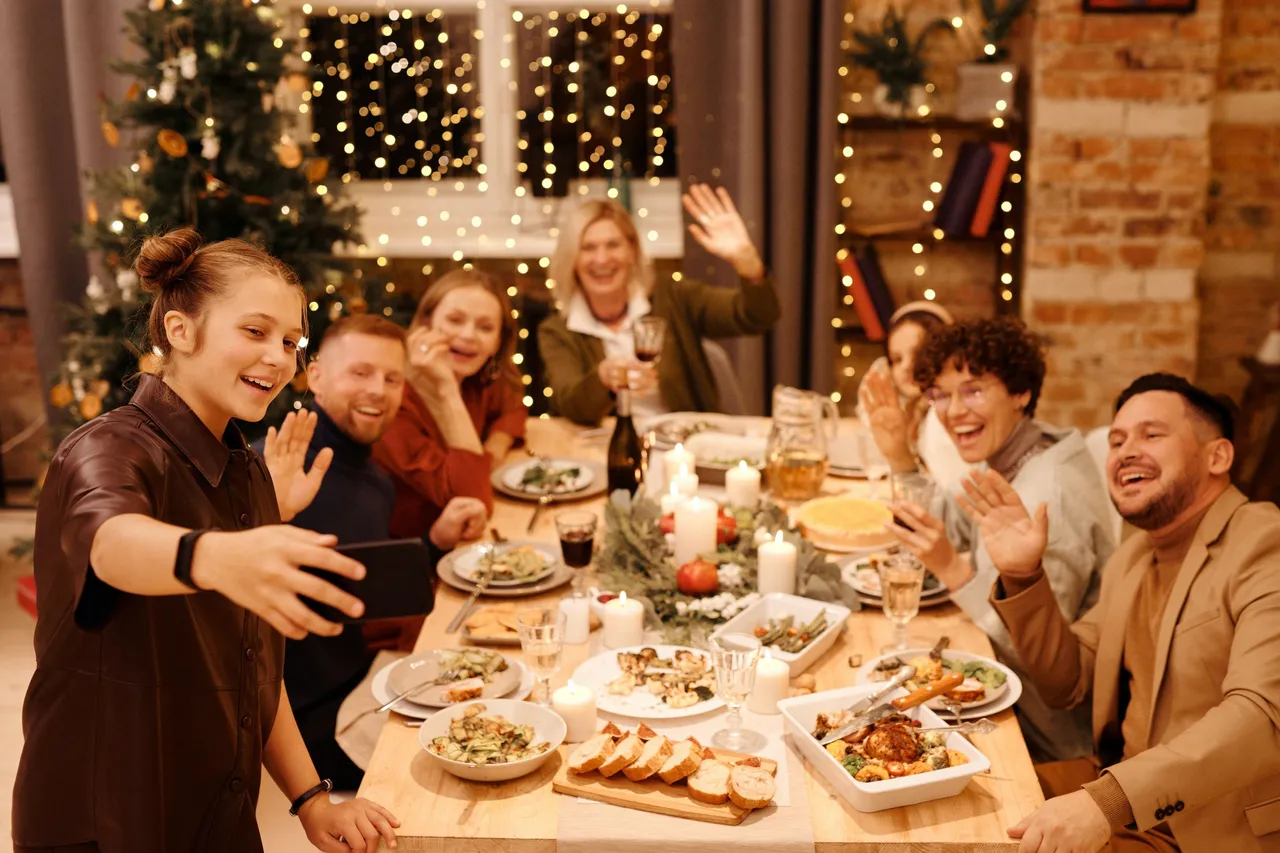

From the time I was a child until I was about eighteen years old, my life was very much marked by the family tradition of Christmas, which was sustained by the presence of my grandmother, who was the matriarch of the family.
The month of December was really something impressive, no matter where you were in the country, if you had a girlfriend or dates with friends, you had the moral and family obligation to go to grandma's house, only in cases of medical emergency or being out of the country is that one was absent, but still, one was present even if it was through a phone call.
Another very particular situation that arose in grandma's house at that time was the following, if there were cousins, uncles, aunts, uncles or any other family member who were upset and distant, when they arrived at grandma's house, they would leave their problems aside and live together in peace, all out of respect for grandma.
It was very nice when one arrived at grandma and grandpa's house and found a huge table, for about twelve people, decorated and full of nuts, hazelnuts, nougat, panettone, ham bread, soft drinks and wine. It was one of the most interesting things for us kids, since the nuts, hazelnuts and nougat, we usually saw them at Christmas time, along with the Christmas tree and the nativity scene.
If it is true that those Christmas luxuries are imported, just like Santa Claus and Mouse Miguelito, it is also true that we enjoyed them very much, as well as the gaitas zulianas, hallacas, pernil, ham bread and salad.
The sad thing was that as we got older, one realizes the realities and begins to understand that the family was not as united as it was seen in the family Christmas tradition. In fact you can see the separations and distances between some of its members, separations that are generated by absurd things, such as political positions or economic situations that keep family members apart throughout the year.
And the only real link in the family, the screw that held the family structure together was the grandmother, which is why the unity of the family lasted only as long as grandmother was alive. After she died, the screw that held the main beam of the family was lost.
And after the main beam fell, the whole structure of the family building collapsed, causing each family nucleus to isolate itself and lead its life in its own space. This being so, I spent years without knowing anything about several cousins or uncles.
And we would get together again in very particular situations, such as at the funerals of relatives and the occasional graduation, when the whole family was invited.
Finally, when I was studying at the university, I remember that in a class I discussed with a Lithuanian professor who had been invited, about the importance of women and their role in the family in Latin American societies, since the role of women, as the unifying axis in the economic, social, religious, cultural, moral and family, was very different in their culture.
I imagine that real stories like the one I am telling here are very common in Latin American countries, because in our societies, more than 70%, at least that was the last data I read a couple of years ago, of women are single mothers and have to fulfill the role of father, mother and moral, affective, economic and religious support of the home.
That is why our mothers, our grandmothers and our life companions are so important for us in Latin American society, since they represent tradition and family union, represented in this text with the hazelnuts, walnuts and nougat on the table. And they are the screw that binds the center beam of the family.
To finish, I will say a saying or proverb that my mother says constantly and that is true in Latin American macho societies: "In this house the rooster sings, but the one who rules is the hen".
Thank you for reading me.


Click to read spanish



Creative Nonfiction: La unión matriarcal:
Desde que era niño hasta aproximadamente los dieciocho años de edad, mi vida estuvo muy marcada por la tradición familiar de la navidad, la cual era sustentada por la presencia de mi abuela, que era la matriarca de la familia.
Realmente el mes de diciembre era algo impresionante, no importaba en que parte del país estuviese uno, si tenías novia o citas con los amigos, un tenía la obligación moral y familiar de ir a la casa de la abuela, solamente en casos de emergencia médica o de estar fuera del país es que uno se ausentaba, pero aún así, uno hacía presencia aunque fuese a través de una llamada telefónica.
Otra situación muy particular que se presentaba en la casa de la abuela en esa época era la siguiente, si había primos, tíos o cualquier otro familiar molesto y distanciado, al llegar a la casa de la abuela, dejaban sus problemas de lado y convivían en santa paz, todo eso por respeto a la abuela.
Era muy bonito cuando uno llegaba a la casa de los abuelos y se encontraba con una enorme mesa, para unas doce personas, adornada y llena de nueces, avellanas, turrones, panetón, pan de jamón, refrescos y vino. Era una de las cosas más interesantes para nosotros los muchachos, ya que las nueces,las avellanas y los turrones, normalmente los veíamos era en la época de navidad, junto con el árbol navideño y el nacimiento.
Si es cierto que esos lujos navideños, son importados al igual que el Santa Claus y el Ratón Miguelito, también es cierto que nosotros lo disfrutábamos mucho al igual que las gaitas zulianas, las hallacas el pernil, el pan de jamón y la ensalada.
Lo triste fue que al ir creciendo, uno se da cuenta de las realidades y comienza a entender que la familia no era tan unida como se veía en la tradición navideña familiar. De hecho se pueden ver las separaciones y las distancias entre algunos de sus miembros, separaciones que se generan por cosas absurdas, como posiciones políticas o situaciones económicas que mantienen a miembros de la familia separados durante todo el año.
Y el único vínculo real de la familia, el tornillo que sostenía la estructura familiar era la abuela, razón por la cual, la unidad de la familia perduró, solo mientras abuela estuvo viva. Después de que ella murió, se perdió el tonillo que sostenía la viga principal de la familia.
Y después de caer la viga principal, toda la estructura de la edificación familiar se vino abajo, lo que hizo que cada núcleo familiar se aislara y llevara su vida en su propio espacio. Siendo así, pasé años sin saber nada de varios primos o tíos.
Y nos reuníamos nuevamente en situaciones muy particulares, como en los entierros de familiares y en alguna que otra graduación, cuando se invitaba a toda la familia.
Finalmente, cuando estaba estudiando en la universidad, recuerdo que en una clase discutí con un profesor Lituano que había sido invitado, sobre la importancia de la mujer y su papel en la familia en las sociedades latinoamericanas, ya que el papel de la mujer, como eje unificador en lo económico, lo social, lo religioso, lo cultural, lo moral y lo familiar, era muy diferente en su cultura.
Me imagino que historias reales como esta que acá comento, son muy comunes en los países latinoamericanos, debido a que en nuestras sociedades, más del 70%, por lo menos ese fue el último dato que leí hace un par de años, de las mujeres son madres solteras y tienen que cumplir con el papel de padre, madre y sostén moral, afectivo, económico y religioso del hogar.
Por eso nuestra madres, nuestras abuelas y nuestras compañeras de vida, son tan importantes para nosotros en la sociedad latinoamericana, ya que representan la tradición y la unión familiar, representada en este texto con las avellanas, nueces y turrones en la mesa. Y son el tornillo que une la viga centra de la familia.
Para finalizar diré un dicho o refrán que dice mi madre constantemente y que es verídico en las sociedades machistas latinoamericanas “En esta casa canta el gallo, pero la que manda es la gallina”.
Gracias por leerme.


